Versatile soybean useful in wide range of products
Advertisement
Hey there, time traveller!
This article was published 24/06/2024 (192 days ago), so information in it may no longer be current.
Lyle Peters says he decided to become a farmer when his dream of playing hockey in the NHL died. He was in Grade 5 or 6 at the time.
It turned out to be the smart career choice, for today he farms over 10,000 acres of soybeans, wheat, corn and canola and raises 75,000 pigs a year, along with three cousins as the third generation at Henervic Farms.
The question about career choice was one of many Peters fielded during a question and answer session following a virtual tour of his farm by elementary students earlier this spring.
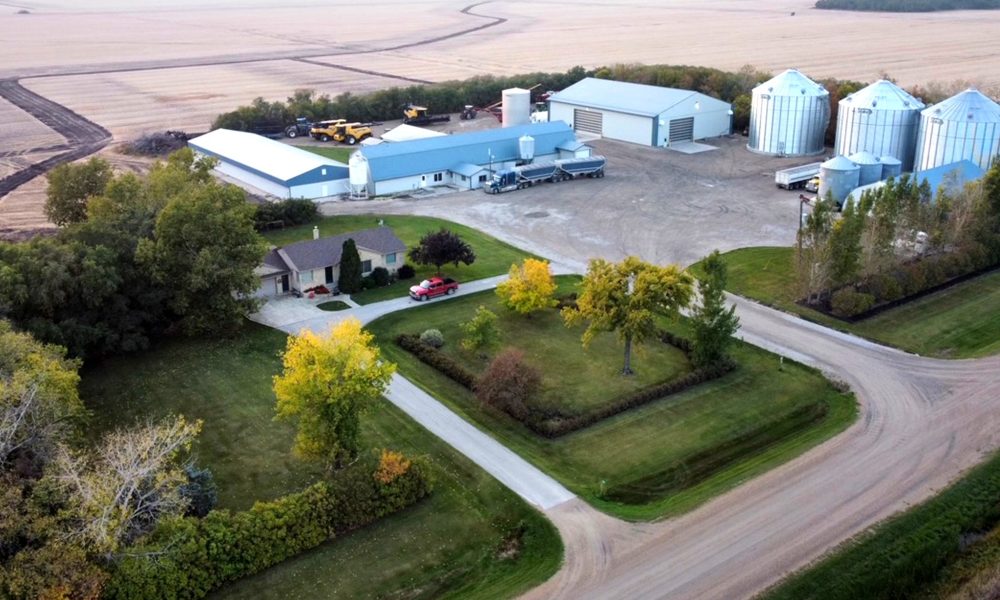
The popular Follow the Farmer series presented by Agriculture in the Classroom this spring featured soybean production and Lyle Peters, of Henervic Farms. He outlined the history of the family farm before outlining the many uses for the most versatile soybean in a video for elementary students.
Lyle and Karlee Peters farm over 10,000 acres with three cousins on a farm started when his grandfather, Henry Peters, came to Canada from Russia, 75 years ago. Before the third generation took over Henervic Farms, the expanding hog and grain farm was run by Lyle’s father, Ed, and his brothers.
Today, Lyle is in charge of the cropping operation of the farm, with approximately one-quarter of the acreage seeded to four different crops in rotation every year.
Last year, Henervic seeded 8,900 acres, with Peters taking care of what was done on the grain side while his cousins, Darryl, Jerome and Craig Sawatzky, handling the 5,000-sow, farrow-to-finish hog operation, raising 75,000 pigs.
Lyle says the cropping operation on the farm involves growing soybeans, corn, wheat and canola in rotation, with approximately one-quarter of the acreage seeded to each crop every year.
This year, they have seeded 10,500 acres and expectations are for an increase to close to 13,000 acres by next year.
The soybean, seeded at the end of May, is one of the most interesting crops in the rotation. It has small flowers which are self-pollinated, and in addition, produces its own nitrogen. Seeds are coated for energy protection and to create a barrier against insects and bad bacteria in the soil. The colour of the seed assists the farmer in making sure seeding is being properly carried out, as well. That is most important when the crop is planted 72 rows at a time.
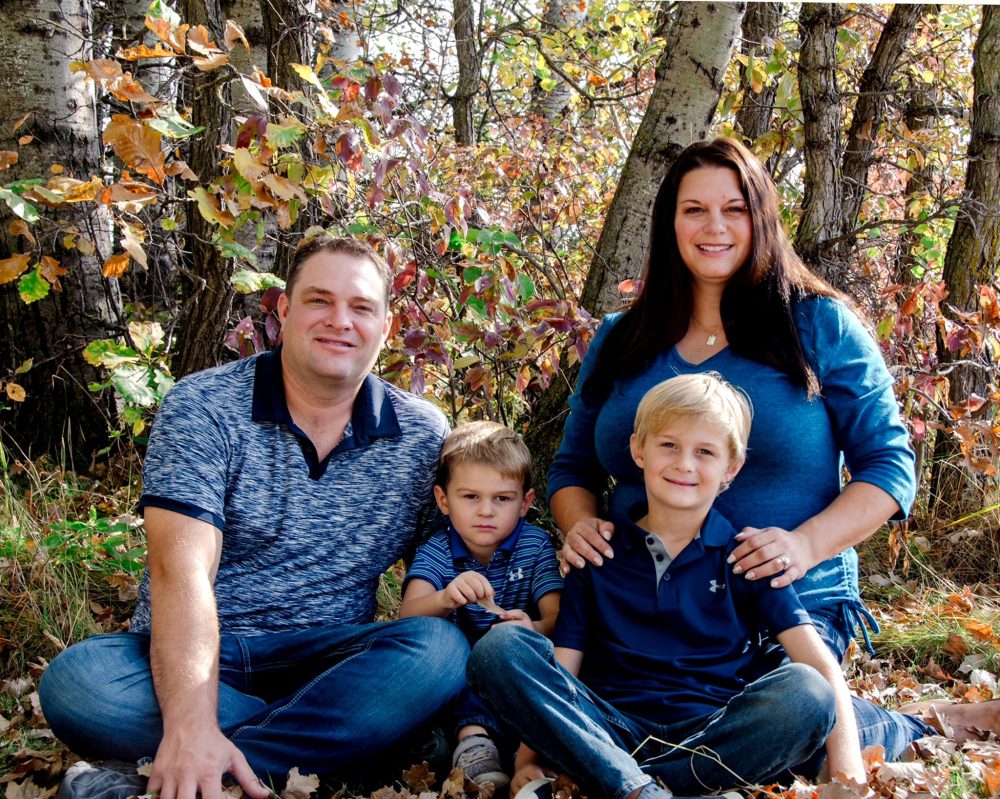
After seeding, a roller drives the seeds into the ground and pushes down any loose stones that may be present. This process is most necessary, Peters explains in the video, as soybeans must be combined very close to the ground.
The soybean is one of the most versatile crops in the Henervic crop rotation. It is used in a variety of edibles like salad dressing, mayonnaise and margarine, and non-edible products like crayons, plastics, candles and lip balm.
Soybean meal, created when soybeans are crushed for oil, is high in protein and very good for livestock feed.
In fact, no part of the soybean plant is wasted. Soybeans produce their own nitrogen, which is the main nutrient for all plants. After harvest, a disc is used to till the empty pods and plant residue back into the soil to provide additional nitrogen for the next crop in the rotation.
Soybeans flourish when there is lots of water and heat during the growing season. Nitrogen fixation occurs when the plant draws nitrogen from the air. During the growing process, the soybean uses the nitrogen it needs and leaves some of the extra in the dirt for next year’s crop.
The Follow the Farmer video show the plant, in its early stages, creating pods. These will become brown and dried out by harvest time. Soybean seeds must be dry and very hard in order to pop out of the pods during harvest, Peters explains.
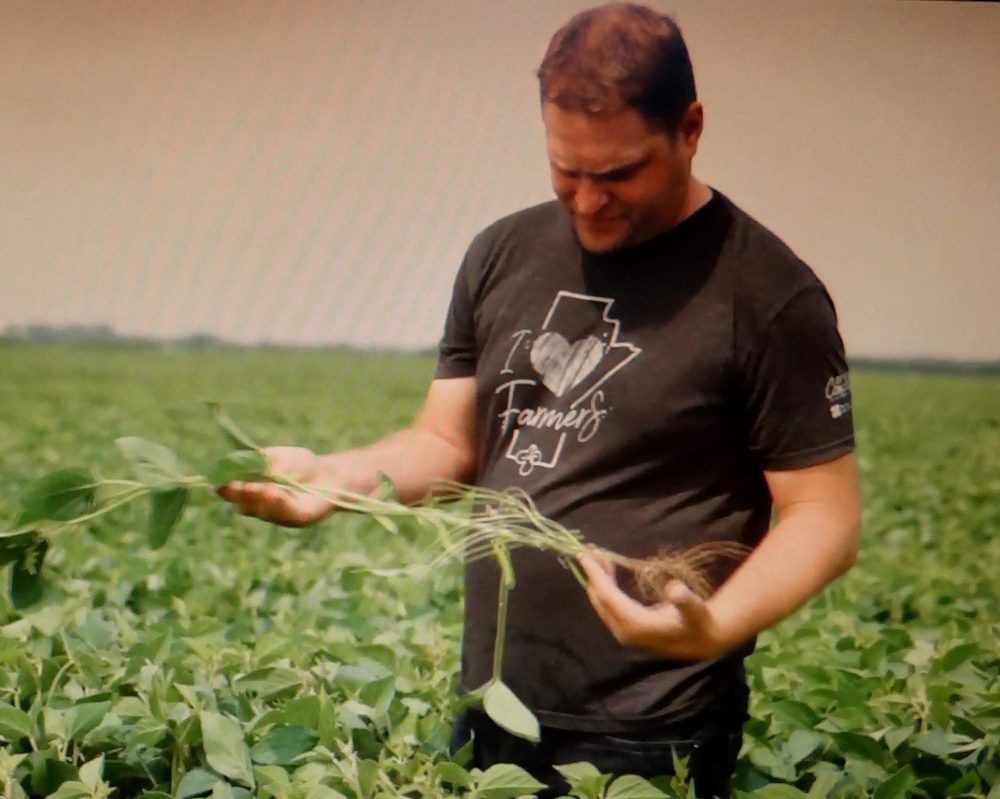
Harvesting is a non-stop process, with the grain cart driving beside the combine to collect the grain from the hopper and then delivering it to a waiting semi-trailer. From there, the crop either goes into storage on the Henervic farmyard, or directly to the elevator.
“Last year, all our soybeans were sold, but that doesn’t happen every year. It turned out to be a good decision for the farm, because the price later dropped from the $17 per bushel it was when we sold.”
During a question period, following the presentation of the video, Peters fielded a variety of questions from students.
One youngster asked why soybean pods were furry and if they were good to eat. Peters explained the furry pod was a protection against insects. The seeds inside can be eaten, but are not very tasty, unlike garden peas in a pod.
Peters went on to say soybeans are great when they are boiled in soup or sprinkled on a salad.
The soybean producer had to get out his calculator when one of the students wanted to know how many soybeans Henervic produced in a year.
“Let’s see. Last year we harvested 52,000 bushels of soybeans. There are 160,000 seeds per bushel, so that adds up to 8.3 billion soybean seeds.”
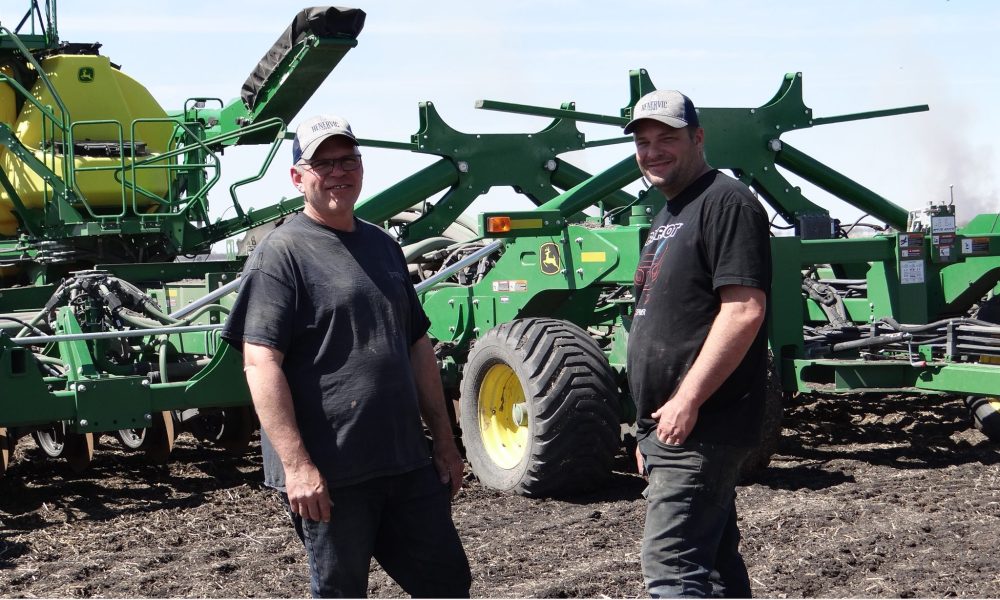
Peters told the students they would have to do their own math to find out what that crop was worth. He explained that in Canada, soybeans are sold by the tonne, but in the United States producers are paid by the bushel.
He did say that growing soybeans was worth the effort and combining was his most favorite part of the job. It is the most rewarding as well, as you get to see the reward for all the work that went into the year’s crop production, he added.
“Everyone who has a garden knows that picking tomatoes is much more fun that weeding tomatoes.”
An added bonus during harvest time is that today’s combine has all the creative comforts, including a fridge. The Peters children enjoy going along for a ride with their dad.
On the other side of the coin, the hardest part of the job is when something breaks when the sun is shining and there is field work to be done, Peters said.
“Fixing things for me is the worst, because I have no patience. But as far as equipment is concerned, things have certainly changed since my grandfather farmed with horses.”
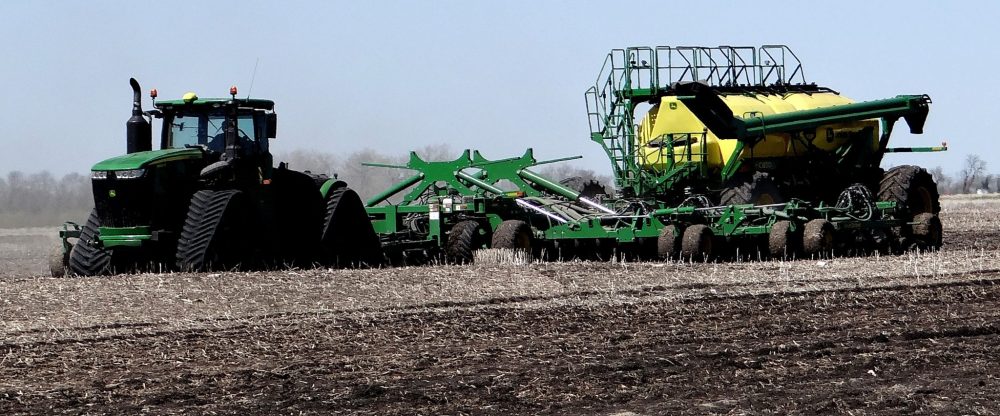
The Henervic’s John Deere air seeder is 60 feet wide and seeds 72 rows at a time. A New Holland combine operates much the same as the threshing process was in the past, but of course, is huge compared to the machines of an earlier generation. The seeds are shaken out of the pods through a sieve with the empty pods returning to the field through the back of the machine. While the principle is not much different, the size of combines has increased along with the size of fields being harvested.
And very likely, the versatility of the soybean grown in Canada has also changed with the times, as more uses for the plant are found, Peters said.
“I read an article about soybeans used for plastics in car parts and turned into toys. It’s hard to imagine that we may have grown some of the soybeans in the toys my kids played with.”
